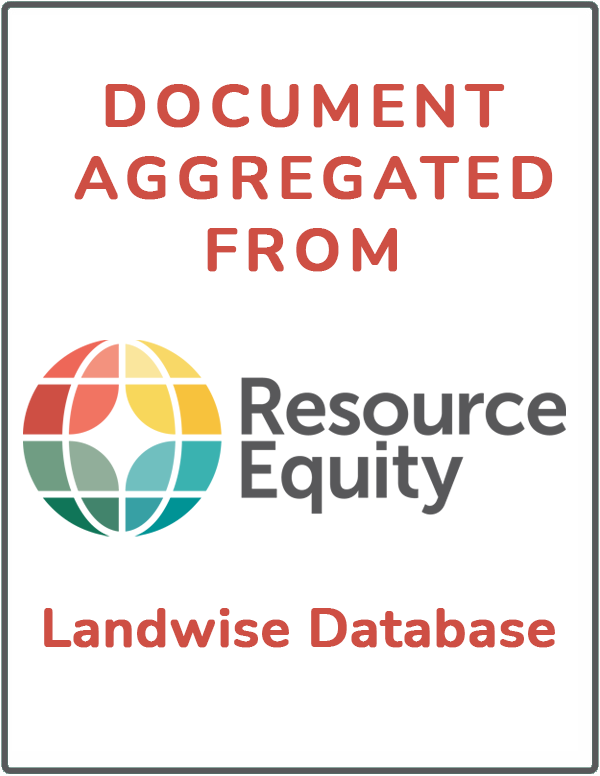Do Relocated Villages Experience More Forest Cover Change? Resettlements, Shifting Cultivation and Forests in the Lao PDR
This study explores the relationships between forest cover change and the village resettlement and land planning policies implemented in Laos, which have led to the relocation of remote and dispersed populations into clustered villages with easier access to state services and market facilities. We used the Global Forest Cover Change (2000–2012) and the most recent Lao Agricultural Census (2011) datasets to assess forest cover change in resettled and non-resettled villages throughout the country.
Do Relocated Villages Experience More Forest Cover Change? Resettlements, Shifting Cultivation and Forests in the Lao PDR
This study explores the relationships between forest cover change and the village resettlement and land planning policies implemented in Laos, which have led to the relocation of remote and dispersed populations into clustered villages with easier access to state services and market facilities. We used the Global Forest Cover Change (2000–2012) and the most recent Lao Agricultural Census (2011) datasets to assess forest cover change in resettled and non-resettled villages throughout the country.
Analysis of Urban Heat Island (UHI) in Relation to Normalized Difference Vegetation Index (NDVI): A Comparative Study of Delhi and Mumbai
The formation and occurrence of urban heat island (UHI) is a result of rapid urbanization and associated concretization. Due to intensification of heat combined with high pollution levels, urban areas expose humans to unexpected health risks. In this context, the study aims at comparing the UHI in the two largest metropolitan cities of India, i.e., Delhi and Mumbai. The presence of surface UHI is analyzed using the Landsat 5 TM image of 5 May 2010 for Delhi and the 17 April 2010 image for Mumbai.
Tenure Security and Land Appropriation under Changing Environmental Governance in Lowland Bolivia and Pará
Appropriation of public lands associated with agricultural frontier expansion is a longstanding occurrence in the Amazon that has resulted in a highly skewed land-tenure structure in spite of recent state efforts to recognize tenure rights of indigenous people and smallholders living in or nearby forests. Growing concerns to reduce environmental impacts from agricultural development have motivated state governments to place greater attention on sustainable land management and forest conservation.
Achieving Conservation and Equity amidst Extreme Poverty and Climate Risk: The Makira REDD+ Project in Madagascar
Achieving forest conservation together with poverty alleviation and equity is an unending challenge in the tropics. The Makira REDD+ pilot project located in northeastern Madagascar is a well-suited case to explore this challenge in conditions of extreme poverty and climatic vulnerability. We assessed the potential effect of project siting on the livelihoods of the local population and which households would be the most strongly impacted by conservation measures.
From Public to Private Standards for Tropical Commodities: A Century of Global Discourse on Land Governance on the Forest Frontier
Globalization and commodity exports have a long history in affecting land use changes and land rights on the tropical forest frontier. This paper reviews a century of social and environmental discourse around land issues for four commodities grown in the humid tropics—rubber, cocoa, oil palm and bananas. States have exercised sovereign rights over land and forest resources and the outcomes for deforestation and land rights of existing users have been quite varied depending on local institutional contexts and political economy.
Soil Degradation in India: Challenges and Potential Solutions
Soil degradation in India is estimated to be occurring on 147 million hectares (Mha) of land, including 94 Mha from water erosion, 16 Mha from acidification, 14 Mha from flooding, 9 Mha from wind erosion, 6 Mha from salinity, and 7 Mha from a combination of factors. This is extremely serious because India supports 18% of the world’s human population and 15% of the world’s livestock population, but has only 2.4% of the world’s land area. Despite its low proportional land area, India ranks second worldwide in farm output.
Modeling Fuel Choice among Households in Northern Cameroon
The present study aims to explore economic and socio-demographic factors that influence a household’s probability to switch from firewood to cleaner fuels (kerosene and LPG) in northern Cameroon. The paper employs an ordered probit model to construct cooking patterns and fuel choices. Three main cooking sources are considered: firewood, kerosene, and liquefied petroleum gas. Utilized data are derived from a national survey conducted in 2004 by the Cameroonian National Institute of Statistics.
Desperately Seeking Sustainability: Urban Shrinkage, Land Consumption and Regional Planning in a Mediterranean Metropolitan Area
Land degradation has expanded in the Mediterranean region as a result of a variety of factors, including economic and population growth, land-use changes and climate variations. The level of land vulnerability to degradation and its growth over time are distributed heterogeneously over space, concentrating on landscapes exposed to high human pressure.










